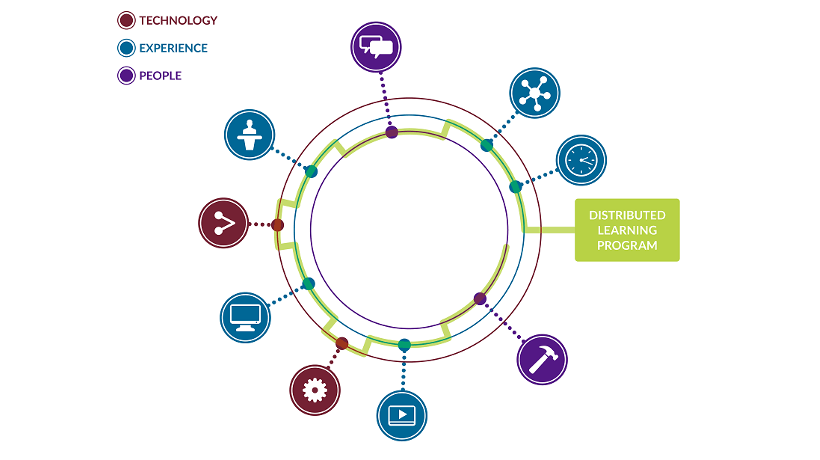Elevate Your Instructional Design With The Distributed Learning Model
As learners' needs constantly evolve, the "anytime, anywhere" approach will continue to take over how we educate ourselves and others. Among the chief representatives of this educational method is the distributed learning model. The distributed learning model offers complete flexibility in the learning process and can easily be adapted to provide a more personalized approach. Let's dive into the concept of distributed learning, along with its main aspects, real-life applications, and upsides.
The Concept Of Distributed Learning
Distributed learning is an instructional model that allows students and instructors to connect and conduct the learning process from separate locations. As a result, learning can take place regardless of time or current location. This model can be combined with more traditional learning modes, such as in-person classroom lessons, or be comprised solely of virtual instruction. Generally, environments based on distributed learning provide the opportunity for in-depth analysis of a subject, as learning overcomes circumstantial obstacles, such as time or space. For the most part, the distributed learning model requires the following:
- Distance: An instructor and a learner in different locations.
- Technology: Portable, tech-based means of conducting the learning process.
- Materials: Synchronous or asynchronous access to learning materials and resources.
- Accessibility: No spatial or time barriers; learning is accessible anytime, anywhere.
There's a bit of confusion regarding the process that this model reflects and the name it should have. In this article, distributed learning refers to learning processes that occur at a geographical distance. The distributed learning approach is also often referred to as blended learning, distance learning, or, in a broader context, eLearning. When it comes to learning that is broken up over a longer period of time, we use the term "spacing effect," which differs from the distributed learning model.
Applying The Distributed Learning Model In Real Life
The distributed learning model is a versatile instructional approach that can be implemented in almost any discipline. While some subject areas may present a challenge because they require a more hands-on approach, other theoretical or tech-based fields can be successfully taught regardless of the instructor's or the student's location. However, the distributed learning model can also be supplemented by field-based courses to facilitate experiential learning, which allows you to cover disciplines that require practical application of knowledge, like medicine, engineering, or trade jobs.
The Upsides Of The Distributed Learning Model
As mentioned above, this model offers flexibility for both student and instructor, as the learning process can occur regardless of where they are and which time zone they're in. This learning model is also more accessible for those learning from remote areas or those who want to combine education with a full-time job or other activities. It can also improve resource allocation, as you don't need to worry about printed materials, travel costs associated with in-person training, or securing a space to host your eLearning class.
This model makes learning more learner-centered since students are encouraged to customize their own learning journey by selecting programs that align with their personal learning preferences and objectives. Furthermore, distributed learning can be more engaging than typical classroom-bound instruction because it integrates new technologies, such as simulation-based platforms. Lastly, incorporating technology into the learning journey develops and enhances skills that are currently sought after in the job market.
Conclusion
The "anytime, anywhere" approach has optimized the way we learn and educate. The distributed learning model is an instructional approach that eliminates circumstantial limitations and promotes learning to a broader audience. Making the most of its upsides can elevate your Instructional Design. Not only do you make education accessible to everyone—you're also encouraged to incorporate flexible means, new technologies, and personalized instruction into your curriculum to boost knowledge retention, skill development, and social learning, all from a distance. If you're interested in learning more, follow along with our Instructional Design Models and Theories list to find the theory or model that's ideal for your objectives and target audience.








